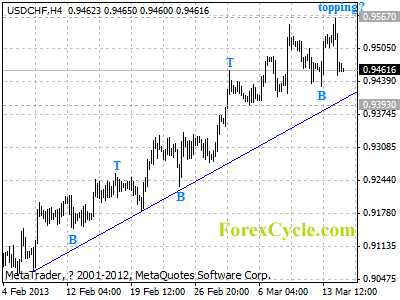By Justice Litle, www.
Crude oil remains the most important commodity on the planet. Without
it, economic and political life as we know it would cease to function.
Four BIG trends will determine where prices go next:
- China’s transition to No. 1 oil importer.
- The death of Hugo Chavez.
- Iran’s distribution of Chinese-made weapons.
- New projections for the U.S. gas boom.
1) China’s transition to No. 1 oil importer
Says Javier Blas, commodities editor of the Financial Times:
China has overtaken the U.S. as the
world’s largest net importer of oil, in a generational shift that will
shake up the geopolitics of natural resources. […]
The U.S. has been the world’s largest
net importer of oil since the mid-1970s, shaping Washington’s foreign
policy towards energy-rich countries such as Saudi Arabia, Iraq and
Venezuela.
America is headed in the direction of energy self-sufficiency…
making slow but compounding strides to wean itself off fuel imports.
China is headed in the opposite direction. It’s becoming more dependent
on foreign oil sources to keep its economy moving.
This sea change favors America. All the talk of China having the U.S. over a fiscal barrel pales in prospect to the dragon’s growing energy vulnerability…
2) The death of “El Presidente”
With 18% of the world’s proven oil reserves, Venezuela is the
fourth-largest oil supplier to America. And yet under the reign of “El
Presidente” oil production dropped by a fifth. This was due to the
state-owned oil giant, PDVSA, falling into gross neglect and disrepair,
as Chavez turned it into an arm of the welfare state.
Chavez’s passing means new opportunity for the Western oil majors to
re-enter Venezuela, renegotiate contracts that Chavez had torn up, and
provide manpower and expertise to help get Venezuelan oil flowing faster
again. This is a longer-term geopolitical positive, but with little
impact on short- to medium-term instability.
- The threat from Iran
Iran’s attainment of Chinese-made weapons is raising hackles. Via The New York Times:
An Iranian dhow seized off the Yemeni coast was carrying
sophisticated Chinese antiaircraft missiles, a development that could
signal an escalation of Iran’s support to its Middle Eastern proxies,
alarming other countries in the region and renewing a diplomatic
challenge to the United States.
The Middle East has long been a giant fireball in waiting. It is
becoming clearer by the day that Iran wants to strike the match…
- America ‘s energy revolution
As The Wall Street Journal reports:
U.S. natural-gas production will
accelerate over the next three decades, new research indicates,
providing the strongest evidence yet that the energy boom remaking
America will last for a generation.
The most exhaustive study to date of a
key natural-gas field in Texas, combined with related research under
way elsewhere, shows that U.S. shale-rock formations will provide a
growing source of moderately priced natural gas through 2040, and
decline only slowly after that…
The impact of the shale gas boom will be profound — especially as
natural gas makes inroads as a transportation fuel. Major corporations
such as FedEx and Caterpillar are already investing heavily in a switch
to natural gas powered vehicles. Electric cars and hybrids are also
strong candidates for natural gas consumption, as electric power plants
are increasingly fueled by natural gas.
In fact, there are powerful incentives on every level — military,
political, economic — for the U.S. to aggressively embrace shale gas.
I’ll be recommending ways to play these big trends in future issues of my global trends newsletter Strategic Wealth Report. Each one holds the potential for once-in-a-lifetime profits for investors who position themselves wisely.
Carpe Divitiae,
Justice
Disclaimer
Article brought to you by Inside Investing Daily. Republish
without charge. Required: Author attribution, links back to original
content or www.insideinvestingdaily.com. Any investment contains risk. Please see our disclaimer.



